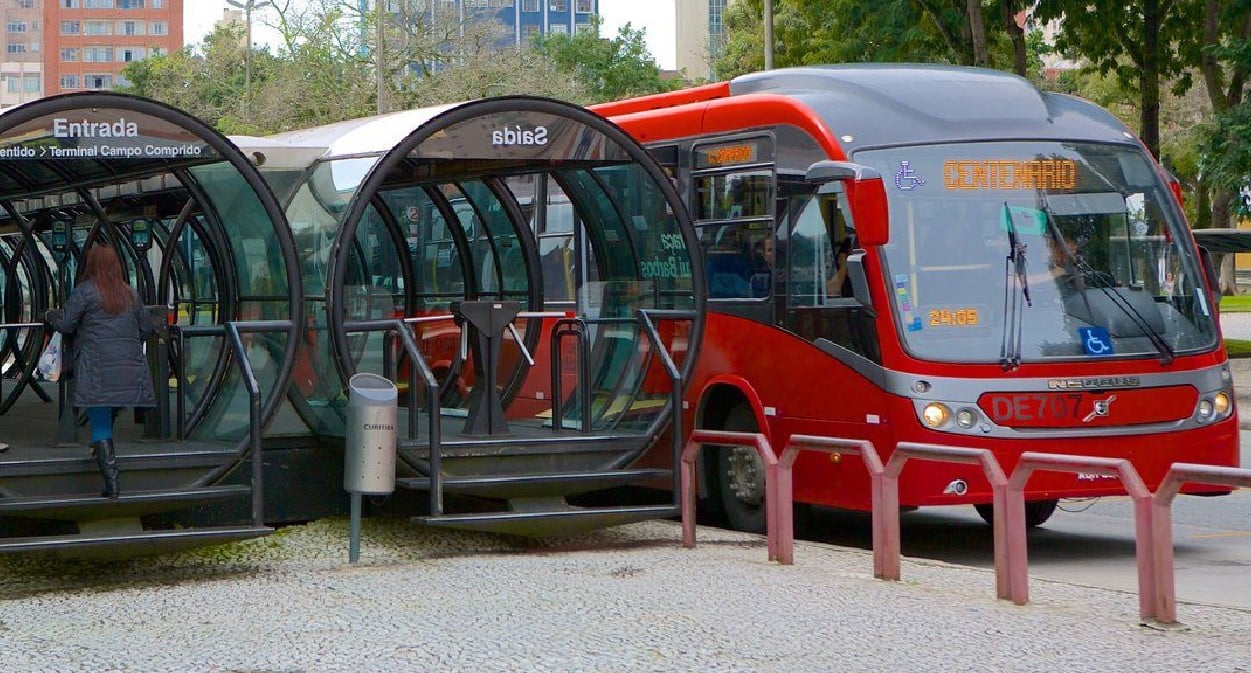Bus Rapid Transit (BRT) systems make their way across Asia
The global increase in popularity of Bus Rapid Transit (BRT) systems doesn’t come as a surprise. Designed to offer a transit system that has the speed, capacity, and service quality of train travel, but using buses, it’s a cost-effective and mobile alternative. BRT systems can cover more remote and lower density areas, and help by offloading public transport traffic.
According to BRT data, more than 180 cities have implemented some form of BRT, carrying around 31 million passengers per day. For APAC alone the numbers are nine million passengers daily in 45 cities across the region.
BRT systems in Asia
Asia, with almost 200 cities with populations over one million, is the ideal region to see the benefits of BRTs. With rapid motorisation throughout the continent, pollution levels are a problem which many governments across Asia struggle with.
BRT systems create a high-quality mass transit system at affordable costs, which is particularly important for developing countries highly reliant on public transport. Like in our previous post, Latin America: The King of BRT, this article aims to cover the examples of BRT systems across APAC, including best uses of open-loop technologies and case studies of the cities that have got it right.
China
Transport in China has experienced major growth and expansion in recent years. With a population of 1.4 billion, it had to adapt to accommodate the demand. As well as a large population, China has a rapidly growing economy, both things that contribute to pollution levels.
The China Transportation Program Strategy was developed with three clear goals, including the use BRT systems as means toward sustainable transportation systems. Over 20 Chinese cities have implemented BRT corridors or are in the process of implementing or are actively planning for a BRT system, including Guangzhou.
The population of Guangzhou had almost doubled in ten years, currently standing at around 15 million. Its BRT corridor opened in February 2010, and it now has one million passengers using over 23km of BRT routes to travel. It’s reported that passengers save a combined 32 million hours each year on their daily commutes, on top of operational savings and lower CO2 emissions.
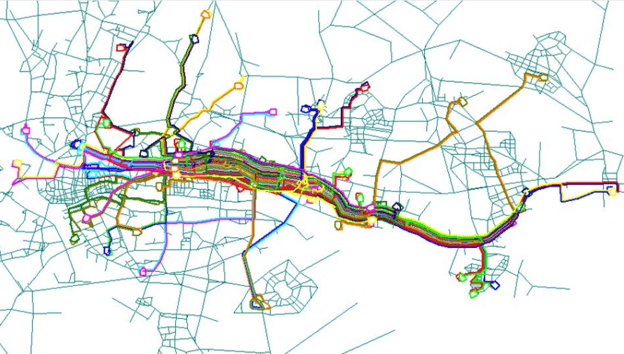
India
India’s population is around 1.3 billion, and increased income and urbanisation in the country has paved the way for rapidly increasing levels of motor vehicle ownership and use, particularly in city areas. The emerging traffic situation has resulted in alarming levels of congestion, air pollution, noise, and traffic danger.
The local city governments of India started to implement BRT to give passengers a safe, fast, and accessible mode of public transport that also tackled the issues of high road usage and pollution levels. There are currently BRT systems in more than 13 cities, including Ahmedabad, the national benchmark for successful BRT implementation,
The sixth largest city in India, Ahmedabad boasts a BRT called Janmarg, which means ‘the people’s way’ in Gujarati. With a dedicated lane for BRT buses and smart, real-time ticketing, Janmarg delivers a transport option that’s both good for the environment and convenient for users. In fact, the system has won national and international awards!
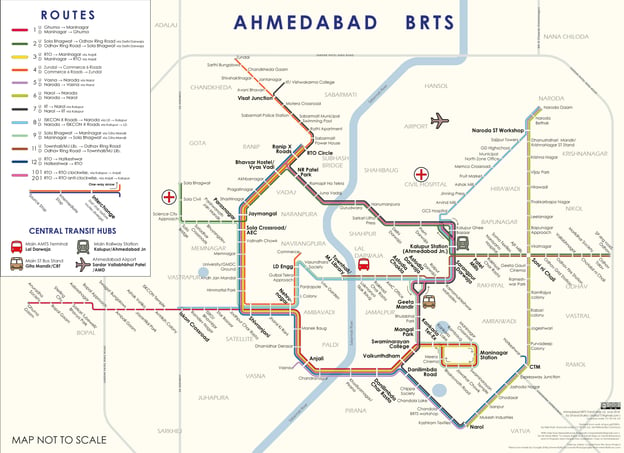
Indonesia
Indonesia’s population of 276 million is spread over around 17,000 islands, and you’ll see a wide variety of vehicles using the road network there. Bus services, especially on larger islands like Sumatra or Java, are generally good, including express services.
Indonesia’s capital, Jakarta, has a BRT system called TransJakarta, which at 251.2km is the longest in the world. Its fleet of more than 4,000 buses carries over one million daily passengers. With government-subsidised tickets and dedicated lanes for buses, TransJakarta is a very successful example of BRT.
It eases traffic on the roads and makes isolated areas more accessible. TransJakarta is currently trialling electric buses, and is looking to dramatically increase its e-bus fleet over the next ten years.
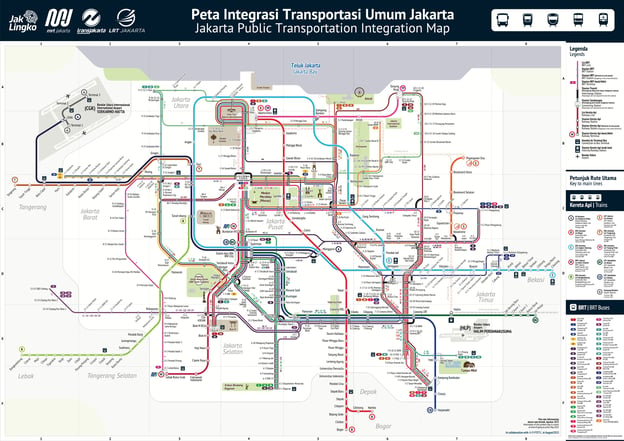
South Korea
South Korea’s high-tech transport network is made up of a number of different easy and convenient options, including high-speed railways, ferry services, and air routes. Despite that, buses remain one of the county’s most popular transport methods.
That’s a lot to do with the work done by the government on reforming South Korea’s bus network. Things like exclusive bus lanes, higher quality vehicles, transit transfer centres, and a new smart card system all make for a successful regional BRT system.
Today, BRT systems operate in six major South Korean cities, with over 150km of exclusive bus lanes. Seoul Metropolitan Area has 157 km of bus exclusive lanes.
Vietnam
While transportation in Vietnam is improving, driving on the country’s roads can still be hazardous. Recently built expressways offer a better, safer design than many roads, and there are two classes of expressway – Class A, with separated interchanges, and Class B, with at-grade intersections.
Hanoi, the capital of Vietnam, has its own BRT system. Running from the downtown Kim Mã terminal to the Yên Nghĩa terminal in the south of the city, it is 14.7km long.
The path to more sustainable transport
More and more Asian city authorities and politicians, particularly in China, are realising the potential and importance of BRT systems in low- to middle-income areas. However, there are still rail-based metro systems being implemented across the continent, where BRT systems would have been a more cost effective and sustainable alternative.
There are opportunities for BRT operators in many cities across Asia, with benefits that include improved functionality of the entire transport infrastructure, faster and more convenient transport for the population, and positive environmental impacts.
Find out how O-CITY can support your transport business with automated fares and accessible payment options that give passengers choice and convenience.
ລະບົບລົດເມໂດຍສານດ່ວນ (BRT) ແລ່ນໄປທົ່ວອາຊີ
ການເພີ່ມຂຶ້ນທົ່ວໂລກຂອງຄວາມນິຍົມຂອງລະບົບ ລະບົບການຂົນສົ່ງດ່ວນ (Bus Rapid Transit (BRT) ບໍ່ໄດ້ເປັນສິ່ງທີ່ແປກໃຈ. ອອກແບບມາເພື່ອສະເໜີໃຫ້ລະບົບການໂດຍສານທີ່ມີຄວາມໄວ, ຄວາມອາດສາມາດ, ແລະຄຸນນະພາບການບໍລິການຂອງການເດີນທາງລົດໄຟ, ແຕ່ການໃຊ້ລົດເມ, ມັນເປັນທາງເລືອກທີ່ຄຸ້ມຄ່າ ແລະໃຊ້ມືຖືໄດ້. ລະບົບ BRT ສາມາດກວມເອົາພື້ນທີ່ຫ່າງໄກສອກຫຼີກແລະຄວາມຫນາແຫນ້ນຕ່ໍາກວ່າ, ແລະຊ່ວຍໂດຍການໂຫຼດການຂົນສົ່ງສາທາລະນະ.
ອີງຕາມຂໍ້ມູນ BRT, ຫຼາຍກວ່າ 180 ເມືອງໄດ້ປະຕິບັດບາງຮູບແບບຂອງ BRT, ຂົນສົ່ງຜູ້ໂດຍສານປະມານ 31 ລ້ານຄົນຕໍ່ມື້. ສໍາລັບ APAC ດຽວ, ຈໍານວນຜູ້ໂດຍສານແມ່ນ 9 ລ້ານຄົນຕໍ່ມື້ໃນ 45 ເມືອງໃນທົ່ວພາກພື້ນ.
ລະບົບ BRT ໃນອາຊີ
ອາຊີ, ມີເກືອບ 200 ເມືອງທີ່ມີປະຊາກອນຫຼາຍກວ່າຫນຶ່ງລ້ານຄົນ, ເປັນເຂດທີ່ເຫມາະສົມທີ່ຈະເຫັນຜົນປະໂຫຍດຂອງ BRT. ດ້ວຍການຂັບຂີ່ລົດຍົນຢ່າງວ່ອງໄວໃນທົ່ວທະວີບ, ລະດັບມົນລະພິດເປັນບັນຫາທີ່ລັດຖະບານຫຼາຍແຫ່ງໃນທົ່ວອາຊີປະສົບກັບຄວາມຫຍຸ້ງຍາກ
ລະບົບ BRT ສ້າງລະບົບການຂົນສົ່ງມວນຊົນທີ່ມີຄຸນນະພາບສູງດ້ວຍລາຄາທີ່ເຫມາະສົມ, ເຊິ່ງເປັນສິ່ງສໍາຄັນໂດຍສະເພາະສໍາລັບປະເທດທີ່ກໍາລັງພັດທະນາທີ່ອີງໃສ່ການຂົນສົ່ງສາທາລະນະສູງ. ເຊັ່ນດຽວກັນກັບບົດຄວາມທີ່ຜ່ານມາຂອງພວກເຮົາ, ອາເມລິກາລາຕິນ: ກະສັດຂອງ BRT, ບົດຄວາມນີ້ມີຈຸດປະສົງເພື່ອໃຫ້ກວມເອົາຕົວຢ່າງຂອງລະບົບ BRT ໃນທົ່ວ APAC, ລວມທັງການນໍາໃຊ້ທີ່ດີທີ່ສຸດຂອງເຕັກໂນໂລຢີເປີດວົງແລະກໍລະນີສຶກສາຂອງຕົວເມືອງທີ່ໄດ້ຮັບມັນຢ່າງຖືກຕ້ອງ.
ຈີນ
ການຂົນສົ່ງຂອງຈີນໄດ້ປະສົບກັບການເຕີບໂຕແລະການເຕີບໂຕທີ່ສຳຄັນໃນຊຸມປີມໍ່ໆມານີ້. ດ້ວຍປະຊາກອນ 1.4 ຕື້ຄົນ, ມັນຕ້ອງໄດ້ປັບຕົວເພື່ອຮອງຮັບຄວາມຕ້ອງການ. ເຊັ່ນດຽວກັນກັບປະຊາກອນຈໍານວນຫຼວງຫຼາຍ, ຈີນມີເສດຖະກິດຂະຫຍາຍຕົວຢ່າງໄວວາ, ທັງສອງສິ່ງທີ່ເຮັດໃຫ້ລະດັບມົນລະພິດ
ແຜນຍຸດທະສາດໂຄງການການຂົນສົ່ງຂອງຈີນໄດ້ຮັບການພັດທະນາໂດຍມີ 3 ເປົ້າໝາຍທີ່ຈະແຈ້ງ, ລວມທັງການນຳໃຊ້ລະບົບ BRT ເປັນທາງໄປສູ່ລະບົບການຂົນສົ່ງແບບຍືນຍົງ. 20 ກວ່າຕົວເມືອງຂອງຈີນໄດ້ປະຕິບັດແລວທາງ BRT ຫຼືພວມດຳເນີນການປະຕິບັດຫຼືພວມວາງແຜນກຳນົດລະບົບ BRT ຢ່າງຕັ້ງໜ້າ, ໃນນັ້ນມີກວາງໂຈ່ວ (Guangzhou)
ປະຊາກອນຂອງກວາງໂຈ່ວໄດ້ເພີ່ມຂຶ້ນເກືອບສອງເທົ່າໃນຮອບສິບປີ, ປະຈຸບັນມີປະມານ 15 ລ້ານຄົນ. ແລວທາງ BRT ຂອງຕົນໄດ້ເປີດໃນເດືອນກຸມພາ 2010, ແລະໃນປັດຈຸບັນມັນມີຜູ້ໂດຍສານຫນຶ່ງລ້ານຄົນທີ່ໃຊ້ເສັ້ນທາງ BRT ຫຼາຍກວ່າ 23 ກິໂລແມັດໃນການເດີນທາງ. ມັນໄດ້ຖືກລາຍງານວ່າຜູ້ໂດຍສານປະຫຍັດເວລາລວມ 32 ລ້ານຊົ່ວໂມງໃນແຕ່ລະປີໃນການເດີນທາງປະຈໍາວັນຂອງພວກເຂົາ, ຢູ່ເທິງການປະຫຍັດການດໍາເນີນງານແລະການປ່ອຍອາຍພິດ CO2 ຕ່ໍາ.
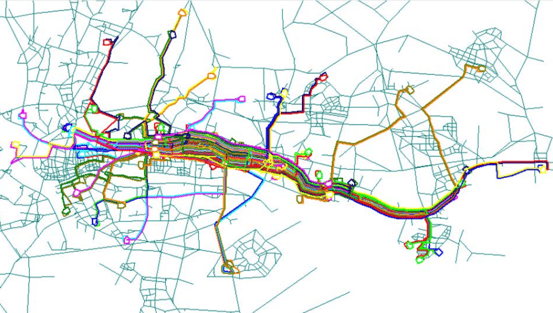
ອິນເດຍ
ປະຊາກອນອິນເດຍມີປະມານ 1.3 ຕື້ຄົນ, ລາຍໄດ້ແລະການເພີ່ມຂື້ນຂອງຕົວເມືອງໃນປະເທດໄດ້ເປີດທາງໃຫ້ແກ່ລະດັບການເປັນເຈົ້າຂອງແລະການນໍາໃຊ້ຍານພາຫະນະທີ່ເພີ່ມຂຶ້ນຢ່າງໄວວາ, ໂດຍສະເພາະໃນເຂດຕົວເມືອງ. ສະພາບການຈະລາຈອນທີ່ເກີດຂຶ້ນໄດ້ສົ່ງຜົນໃຫ້ເກີດຄວາມແອອັດ, ມົນລະພິດທາງອາກາດ, ສຽງດັງ, ແລະອັນຕະລາຍໃນການສັນຈອນ.
ລັດຖະບານເມືອງທ້ອງຖິ່ນຂອງອິນເດຍໄດ້ເລີ່ມປະຕິບັດ BRT ເພື່ອໃຫ້ຜູ້ໂດຍສານມີຮູບແບບການຂົນສົ່ງສາທາລະນະທີ່ປອດໄພ, ໄວ, ແລະສາມາດເຂົ້າເຖິງໄດ້, ເຊິ່ງຍັງແກ້ໄຂບັນຫາການນໍາໃຊ້ຖະຫນົນສູງແລະລະດັບມົນລະພິດ. ໃນປັດຈຸບັນມີລະບົບ BRT ຢູ່ໃນຫຼາຍກວ່າ 13 ເມືອງ, ລວມທັງເມືອງ (Ahmedabad), ມາດຕະຖານແຫ່ງຊາດສໍາລັບການປະຕິບັດ BRT ປະສົບຜົນສໍາເລັດ.
ເມືອງໃຫຍ່ທີ 6 ໃນປະເທດອິນເດຍ, Ahmedabad ມີລົດ BRT ທີ່ເອີ້ນວ່າ Janmarg, ຊຶ່ງຫມາຍຄວາມວ່າ "ວິທີການຂອງປະຊາຊົນ" ໃນ Gujarati. ດ້ວຍເສັ້ນທາງທີ່ອຸທິດຕົນສໍາລັບລົດເມ BRT ແລະການອອກປີ້ແບບສົດໆ, Janmarg ໃຫ້ທາງເລືອກການຂົນສົ່ງທີ່ທັງດີສໍາລັບສະພາບແວດລ້ອມແລະສະດວກສໍາລັບຜູ້ໃຊ້. ແທ້ຈິງແລ້ວ, ລະບົບໄດ້ຮັບລາງວັນລະດັບຊາດແລະສາກົນ!
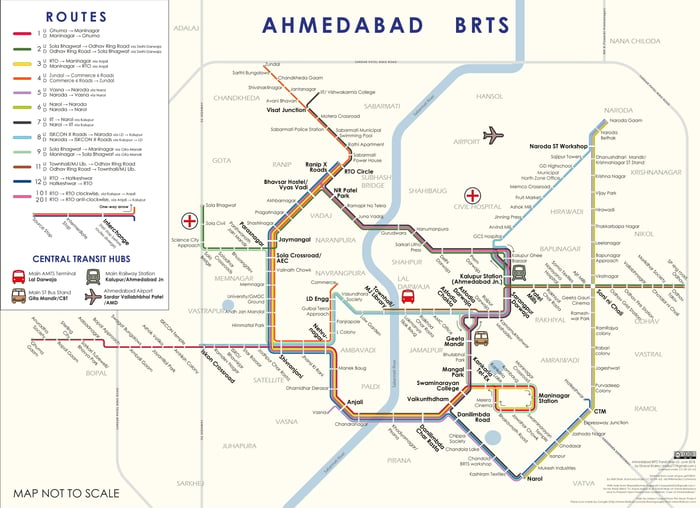
ອິນໂດເນເຊຍ
ປະຊາກອນຂອງອິນໂດເນເຊຍ 276 ລ້ານຄົນແມ່ນແຜ່ຂະຫຍາຍໄປປະມານ 17,000 ເກາະ, ແລະທ່ານຈະເຫັນຍານພາຫະນະທີ່ຫຼາກຫຼາຍທີ່ໃຊ້ເຄືອຂ່າຍເສັ້ນທາງຢູ່ທີ່ນັ້ນ. ການບໍລິການລົດເມ, ໂດຍສະເພາະໃນເກາະໃຫຍ່ເຊັ່ນ Sumatra ຫຼື Java, ໂດຍທົ່ວໄປແມ່ນດີ, ລວມທັງການບໍລິການດ່ວນ.
ນະຄອນຫຼວງຈາກາຕາຂອງອິນໂດເນເຊຍມີລະບົບ BRT ທີ່ເອີ້ນວ່າ TransJakarta, ເຊິ່ງຢູ່ທີ່ 251.2 ກິໂລແມັດແມ່ນຍາວທີ່ສຸດໃນໂລກ. ລົດເມຂອງຕົນມີຫຼາຍກວ່າ 4,000 ຄັນບັນທຸກຜູ້ໂດຍສານຫຼາຍກວ່າ 1 ລ້ານຄົນຕໍ່ມື້. ດ້ວຍປີ້ທີ່ລັດຖະບານອຸດຫນູນ ແລະເສັ້ນທາງທີ່ອຸທິດຕົນສໍາລັບລົດເມ, TransJakarta ເປັນຕົວຢ່າງທີ່ປະສົບຜົນສໍາເລັດຫຼາຍຂອງ BRT.
ມັນຊ່ວຍຜ່ອນການສັນຈອນຕາມຖະໜົນຫົນທາງ ແລະ ເຮັດໃຫ້ເຂດຫ່າງໄກສອກຫຼີກສາມາດເຂົ້າເຖິງໄດ້ຫຼາຍຂຶ້ນ. ໃນປັດຈຸບັນ TransJakarta ກໍາລັງທົດລອງໃຊ້ລົດເມໄຟຟ້າ, ແລະກໍາລັງຊອກຫາທີ່ຈະເພີ່ມຈໍານວນເຮືອ e-bus ຂອງຕົນຢ່າງຫຼວງຫຼາຍໃນໄລຍະສິບປີຂ້າງຫນ້າ.
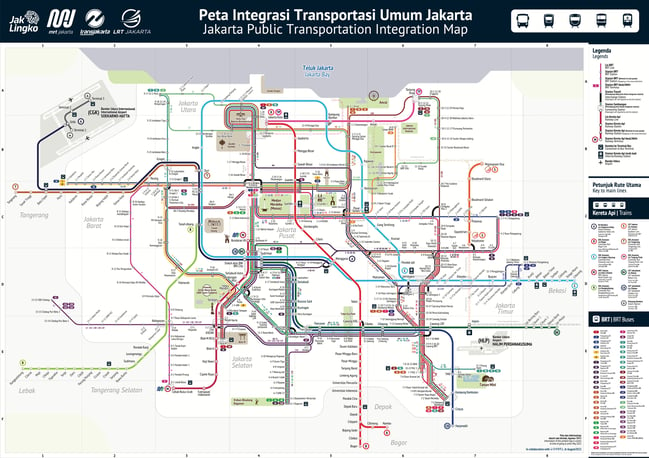
ເກົາຫຼີໃຕ້
ເຄືອຂ່າຍການຂົນສົ່ງເຕັກໂນໂລຊີສູງຂອງເກົາຫຼີໃຕ້ແມ່ນປະກອບດ້ວຍຈໍານວນຂອງທາງເລືອກທີ່ງ່າຍແລະສະດວກທີ່ແຕກຕ່າງກັນ, ລວມທັງທາງລົດໄຟຄວາມໄວສູງ, ການບໍລິການເຮືອຂ້າມຟາກ, ແລະເສັ້ນທາງທາງອາກາດ. ເຖິງຢ່າງນັ້ນ, ລົດເມຍັງຄົງເປັນໜຶ່ງໃນວິທີການຂົນສົ່ງທີ່ນິຍົມທີ່ສຸດຂອງເມືອງ.
ນັ້ນແມ່ນການເຮັດຫຼາຍຢ່າງກັບວຽກງານທີ່ລັດຖະບານເຮັດໃນການປະຕິຮູບເຄືອຂ່າຍລົດເມຂອງເກົາຫຼີໃຕ້. ສິ່ງຕ່າງໆເຊັ່ນ: ເສັ້ນທາງລົດເມສະເພາະ, ພາຫະນະທີ່ມີຄຸນນະພາບສູງກວ່າ, ສູນການສົ່ງຜ່ານ, ແລະລະບົບບັດອັດສະລິຍະອັນໃໝ່ລ້ວນແຕ່ເຮັດໃຫ້ລະບົບ BRT ພາກພື້ນປະສົບຜົນສຳເລັດ.
ປະຈຸບັນ, ລະບົບ BRT ປະຕິບັດການຢູ່ໃນ 6 ເມືອງໃຫຍ່ຂອງເກົາຫຼີໃຕ້, ມີເສັ້ນທາງລົດເມສະເພາະຫຼາຍກວ່າ 150 ກິໂລແມັດ. ກຸງໂຊລ ພື້ນທີ່ມີ 157 ກິໂລແມັດຂອງເສັ້ນທາງສະເພາະລົດເມ.
ຫວຽດນາມ
ໃນຂະນະທີ່ການຄົມມະນາຄົມຢູ່ຫວຽດນາມ ໄດ້ຮັບການປັບປຸງ, ການຂັບຂີ່ຕາມຖະໜົນຫົນທາງຂອງປະເທດຍັງຄົງເປັນອັນຕະລາຍ. ທາງດ່ວນທີ່ສ້າງຂຶ້ນເມື່ອໄວໆມານີ້ ສະເໜີການອອກແບບທີ່ດີຂຶ້ນ, ປອດໄພກວ່າຖະໜົນຫຼາຍສາຍ, ແລະ ມີສອງຊັ້ນຂອງທາງດ່ວນຄື: ຊັ້ນ A, ມີທາງແຍກແຍກກັນ, ແລະ ຊັ້ນ B, ມີທາງຕັດຊັ້ນຮຽນ.
ຮ່າໂນ້ຍ(Hanoi), ນະຄອນຫຼວງຂອງຫວຽດນາມ, ມີລະບົບ BRT ເປັນຂອງຕົນເອງ. ໂດຍແລ່ນຈາກສະໜາມບິນກິມມະຫາສະໜາມບິນຢຽນງາທາງພາກໃຕ້ຂອງນະຄອນມີຄວາມຍາວ 14,7 ກິໂລແມັດ.
ເສັ້ນທາງໄປສູ່ການຂົນສົ່ງແບບຍືນຍົງ
ອຳນາດການປົກຄອງເມືອງແລະນັກການເມືອງອາຊີນັບມື້ນັບຫຼາຍຂຶ້ນ, ໂດຍສະເພາະແມ່ນຢູ່ຈີນ, ໄດ້ຮັບຮູ້ເຖິງຄວາມສາມາດແລະຄວາມສຳຄັນຂອງລະບົບ BRT ໃນເຂດທີ່ມີລາຍໄດ້ຕ່ຳເຖິງປານກາງ. ເຖິງຢ່າງໃດກໍ່ຕາມ, ຍັງມີລະບົບລົດໄຟໃຕ້ດິນທີ່ອີງໃສ່ທາງລົດໄຟຖືກປະຕິບັດໃນທົ່ວທະວີບ, ບ່ອນທີ່ລະບົບ BRT ຈະເປັນທາງເລືອກທີ່ມີປະສິດທິພາບແລະຍືນຍົງກວ່າ.
ມີໂອກາດສໍາລັບຜູ້ປະກອບການ BRT ໃນຫຼາຍເມືອງໃນທົ່ວອາຊີ, ມີຜົນປະໂຫຍດທີ່ປະກອບມີການປັບປຸງການເຮັດວຽກຂອງໂຄງສ້າງພື້ນຖານການຂົນສົ່ງທັງຫມົດ, ການຂົນສົ່ງທີ່ໄວແລະສະດວກກວ່າສໍາລັບປະຊາກອນ, ແລະຜົນກະທົບຕໍ່ສິ່ງແວດລ້ອມໃນທາງບວກ.
ຊອກຫາວິທີທີ່ O-CITY ສາມາດສະຫນັບສະຫນູນທຸລະກິດການຂົນສົ່ງຂອງທ່ານດ້ວຍຄ່າໂດຍສານອັດຕະໂນມັດ ແລະທາງເລືອກໃນການຈ່າຍເງິນທີ່ໃຫ້ທາງເລືອກ ແລະຄວາມສະດວກແກ່ຜູ້ໂດຍສານ.


